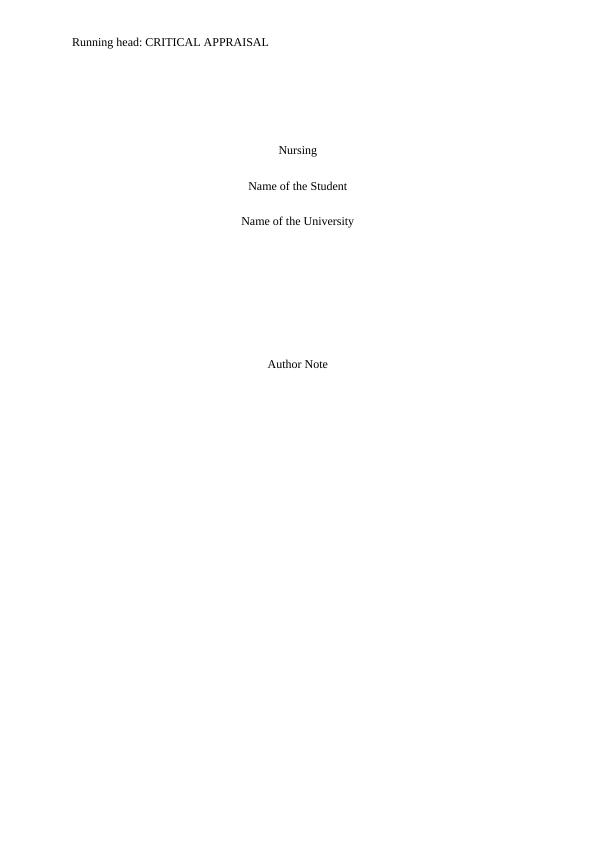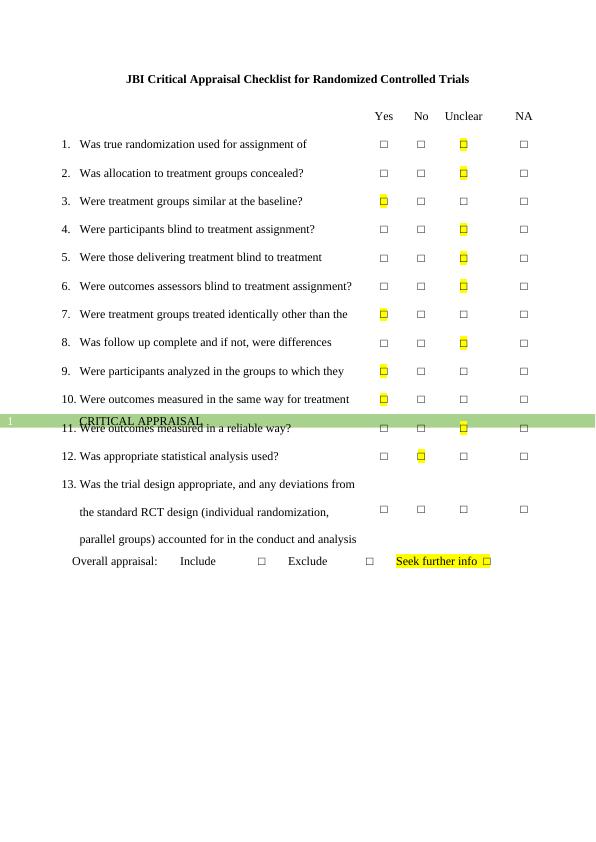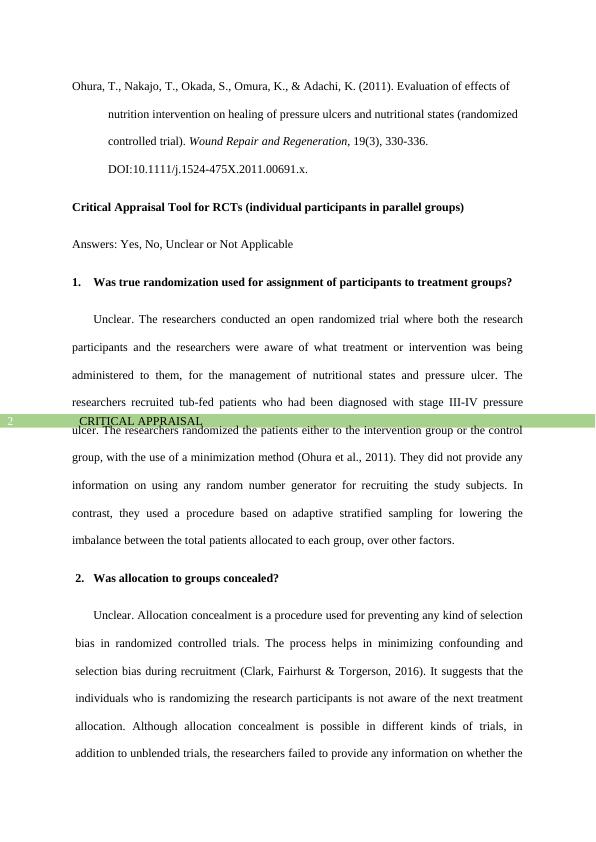Critical Appraisal of Ohura et al. (2011) Randomized Controlled Trial
The objective of this study was to evaluate the effects of nutrition intervention on nutritional states and healing of pressure ulcers by standardizing or unified factors including nursing, care and treatment in a multicenter open randomized trial.
9 Pages2204 Words455 Views
Added on 2022-11-14
About This Document
This article provides a critical appraisal of Ohura et al. (2011) randomized controlled trial on the evaluation of effects of nutrition intervention on healing of pressure ulcers and nutritional states. It includes answers to JBI critical appraisal checklist for RCTs, subject, course code, course name, and university.
Critical Appraisal of Ohura et al. (2011) Randomized Controlled Trial
The objective of this study was to evaluate the effects of nutrition intervention on nutritional states and healing of pressure ulcers by standardizing or unified factors including nursing, care and treatment in a multicenter open randomized trial.
Added on 2022-11-14
ShareRelated Documents
End of preview
Want to access all the pages? Upload your documents or become a member.
Critical Appraisal of an RCT Research Tool Course 2022
|7
|1664
|14
Evaluation of effects of nutrition intervention on healing of pressure ulcers and nutritional states (randomized controlled trial)
|8
|1748
|78
Article on Effectiveness of Preoperative Immunonutrition
|4
|691
|137
Report on Randomised Control Trial
|9
|2361
|64
Critical Appraisal of Article
|10
|2111
|232
Pressure Mattresses in pressure ulcer prevention.
|16
|1410
|19



